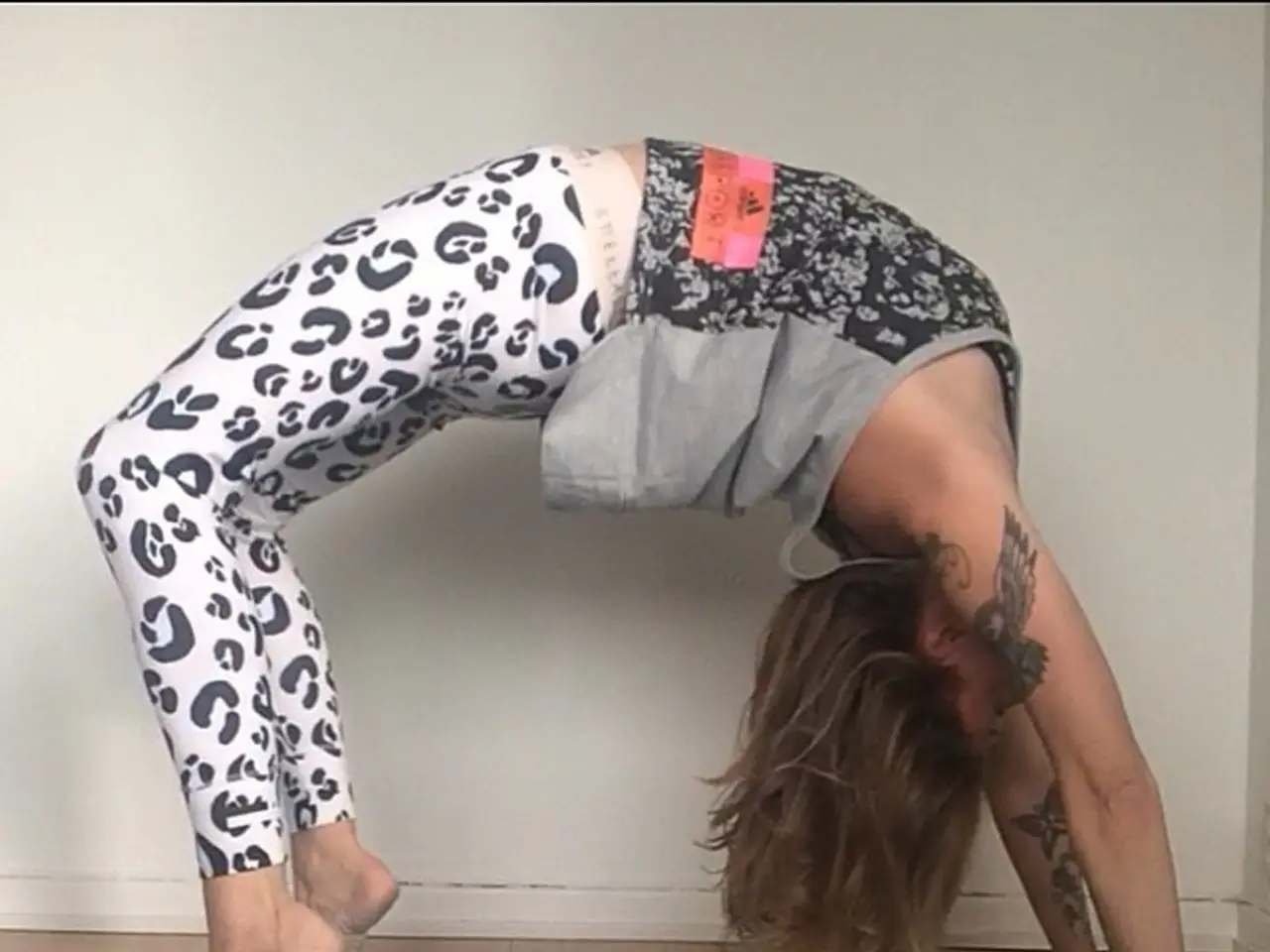Yoga for Wellbeing: Easy Postures for Mental Clarity and Stress Alleviation
### Discovering the Stress-Relieving Benefits of Yoga
Yoga, a global practice that has been around for thousands of years, is renowned for its positive impact on well-being. This ancient discipline, combining breath control, body bending, stretching, and meditation, offers a plethora of benefits, particularly when it comes to reducing stress and anxiety.
#### Yoga Poses for Stress Relief
Specific yoga poses help combat stress and anxiety primarily by calming the nervous system, encouraging diaphragmatic breathing, and promoting emotional grounding.
**Activating the parasympathetic nervous system** is one way yoga poses aid in stress reduction. Poses like the **Corpse Pose (Savasana)** promote complete relaxation and stillness, helping the body enter a rest-and-digest state and restore inner peace[1].
**Encouraging diaphragmatic (deep abdominal) breathing** is another mechanism through which yoga poses reduce stress. Poses such as the **Reclining Bound Angle Pose (Supta Baddha Konasana)** promote an open chest and supported knees, encouraging deep diaphragmatic breathing that reduces cortisol (the stress hormone) and calms anxiety[1].
**Grounding and emotional safety** are also provided by certain poses. For instance, the **Child’s Pose (Balasana)** induces a sense of security by curling inward and focusing on breath, which helps relax the spine, calm the brain, ease fatigue, and reduce fear and stress[1][2].
**Gentle movement linked with breath** is another effective approach. Flowing poses such as the **Cat-Cow Stretch (Marjaryasana-Bitilasana)** combine rhythmic spinal movements with breathwork to release muscular tension and soothe anxious thoughts[1].
**Heart-opening postures** like the **Bridge Pose** and **Camel Pose (Ustrasana)** open the chest, releasing stored emotions and alleviating mild depression and anxiety by increasing circulation and calming the nervous system[3][2].
**Restorative inversions** are also beneficial. Poses such as the **Legs-Up-The-Wall (Viparita Karani)** reverse blood flow, increase circulation to the brain, and induce relaxation by calming the nervous system and quieting the mind[1][3].
**Building confidence and mental stability** is another advantage of yoga poses. Standing poses like **Warrior II (Virabhadrasana II)** and **Tree Pose (Vrikshasana)** foster inner strength, courage, focus, and balance, which help reduce feelings of fear and anxiety[2][5].
#### Pranayama (Breath Control) for Stress Relief
Breathwork, or Pranayama, is a relevant technique in Yoga for Health practice. Techniques that emphasize *abdominal breathing* and *lengthening the exhalation relative to the inhalation* decrease the physiological symptoms of anxiety by calming the nervous system, reducing heart rate, and improving oxygenation[4].
Conscious breathing helps bring awareness to the present moment, which can interrupt cycles of anxious rumination and promote emotional balance[1][4].
#### Embracing Yoga for a Calmer Life
Incorporating yoga into a daily routine offers numerous benefits, including stress reduction, mental clarity, physical wellness, emotional balance, and improved quality of thoughts. To enhance mental clarity with yoga, consider integrating short training sessions several times within a day.
Yoga for Health is particularly effective in helping people cope with chronic stress by decreasing cortisol production and overall physical and nervous system stress[6]. It is advisable to practice Yoga for Health at least three to four times a week for maximum benefits.
Regular engagement in these breathing exercises can soothe the nervous system, decrease stress cortisol levels, and improve concentration. A simple morning routine for beginners might include the **Mountain pose**, **Cat-Cow Pose**, **Child pose**, **Seated Forward Fold**, **Legs Up the Wall Pose**, and **Corpse Pose**.
To begin or proliferate a yoga practice, one can start with easy poses like the **Child Pose** or **Mountain Pose**, take time to relax and listen to breath, practice at the same time of the day, and gradually progress to more advanced poses.
Remember, the journey towards a calmer, more balanced life begins with the first step towards yoga.
[1] Hesselbein, J. (2015). Yoga and the Science of Mind and Body. Chichester: Wiley-Blackwell.
[2] Lee, M. S. (2013). The Complete Book of Yoga. London: Dorling Kindersley.
[3] Tiwari, A. (2016). Yoga Asanas: The Definitive Guide to All Asanas. New Delhi: Jaico Publishing House.
[4] Rao, V. (2012). The Art and Science of Pranayama. New Delhi: Motilal Banarsidass Publishers.
[5] Iyengar, B. K. S. (2001). Light on Yoga. London: Thorsons.
[6] Khalsa, S. (2008). Your Body, Your Yoga. New York: HarperCollins.
- Yoga's impact on well-being extends beyond stress reduction, as it promotes a healthy lifestyle and strengthens muscles.
- In addition to stress relief, certain yoga poses like the Child's Pose and Warrior II foster inner strength and emotional balance.
- Breathwork, or Pranayama, is a fundamental part of yoga practice, promoting mental health by calming the nervous system and improving oxygenation.
- Adopting a calmer life through yoga means incorporating training sessions in a daily routine for stress reduction, mental clarity, and emotional balance.
- Yoga for Health, particularly the Mountain pose, Cat-Cow Pose, Child pose, Seated Forward Fold, Legs Up the Wall Pose, and Corpse Pose, can be integrated into a simple morning routine for beginners.
- Engaging in regular yoga practice can lead to areduce in stress cortisol levels, aiding in coping with chronic stress and improving overall mental and physical wellness.




